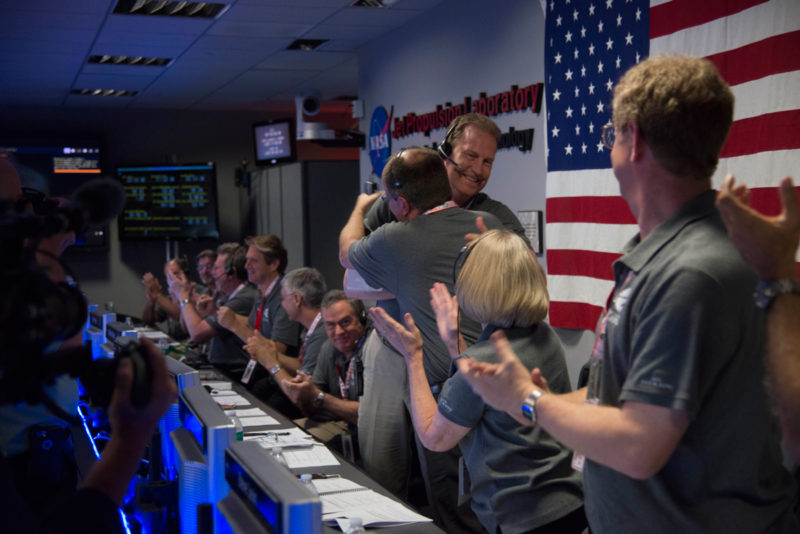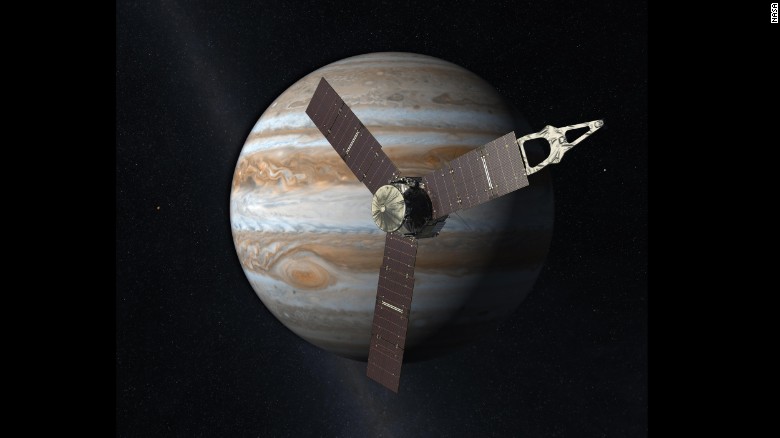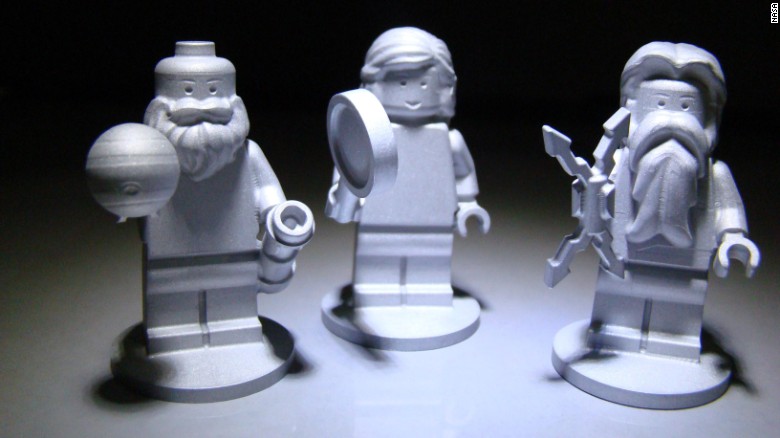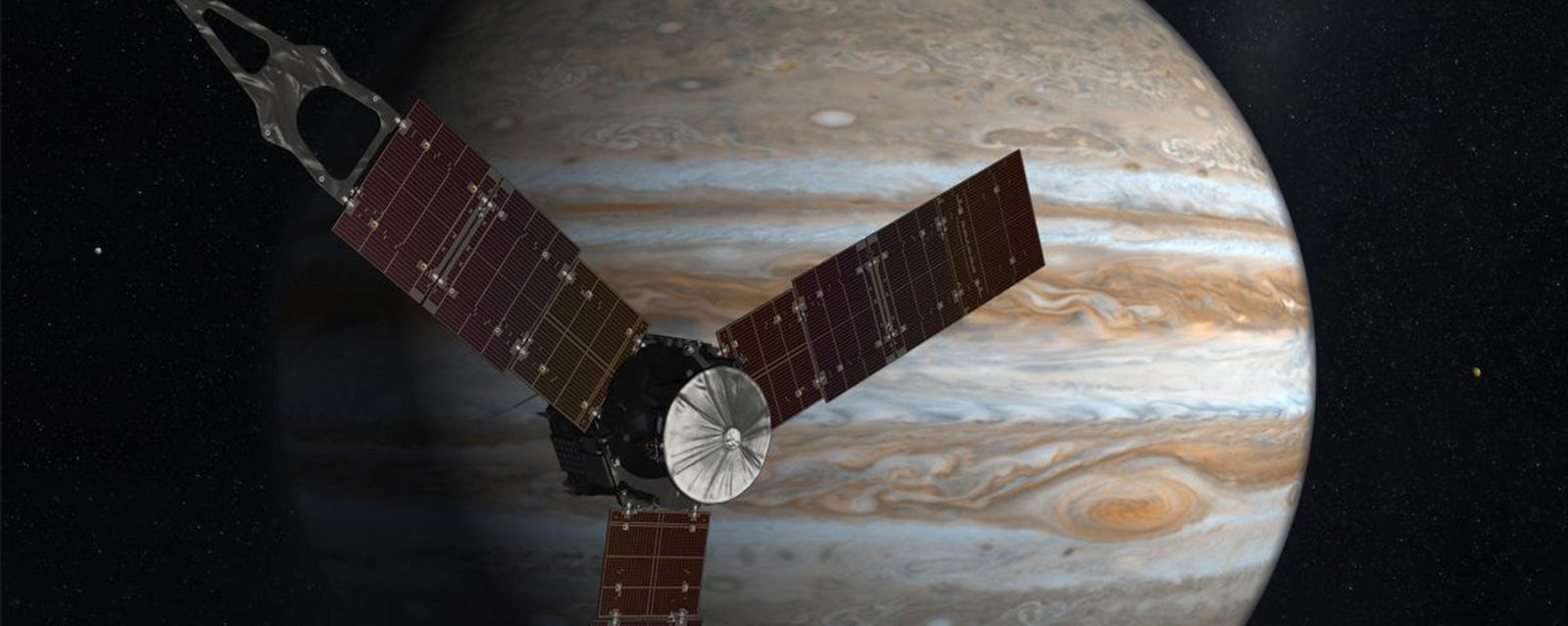Space and Astronomy
JUNO meets the King ! – NASA JUNO spacecraft Achieves Orbit around Jupiter.
NASA Juno spacecraft, which was lunched 5 years ago on a mission to Jupiter has finally reached Jupiter orbit, Juno meets the King! Juno is equated with over nine science tools to investigate multiple parts of Jupiter. NASA said “Juno’s principal goal is to understand the origin and evolution of Jupiter.” Which is really exciting! Who knows what kind interesting findings will come from the multiple test NASA conducts. They are hoping to find some critical knowledge regarding our understanding of planetary systems being discovered around other stars. They hope that Juno can help us unlock Jupiter. The more we know about Jupiter the more answers we have regarding our solar system.
Nearly a five year space voyage, threw our solar system. A 1.7 billion mile journey threw the stars. NASA JUNO orbiter successfully entered Jupiter’s orbit late Monday night, on July 4th, 2016. According to NASA “Confirmation of successful orbit insertion was received from JUNO tracking data monitored at the navigation facility at NASA jet propulsion laboratory(JPL) in Pasadena, California, as well as at the Lockheed Martin Juno operations center in Denver. The telemetry and tracking data were received by NASA’s Deep Space Network antennas in Gold-stone, California, and Canberra, Australia.”
It was an intense maneuver, the stakes we’re high. Facing radiation and a field of space rocks. NASA only had one shot at this, it was either everything or nothing. The orbiter had to slow down just enough to allow it to be pulled into Jupiter orbit. In order to conduct this maneuver, then they had to do a 35 minute engine burn. NASA states “Preplanned events leading up to the orbital insertion engine burn included changing the spacecraft’s attitude to point the main engine in the desired direction and then increasing the spacecraft’s rotation rate from 2 to 5 revolutions per minute to help stabilize it.” Getting the orbiter to just the right speed, then hitting the brakes inching Juno into orbit around “The King of Plants” Jupiter. “NASA did it again” said Scott Bolton, Juno principal Investigator.

.The Juno team celebrates at NASA’s Jet Propulsion Laboratory in Pasadena, California, after receiving data indicating that NASA’s Juno mission entered orbit around Jupiter. Rick Nybakken, Juno project manager at JPL, is seen at the center hugging JPL’s acting director for solar system exploration, Richard Cook. Credit: NASA/JPL-Caltech
Juno’s spacecraft sizes clock in at about 11.5 feet tall and 11.5 feet in diameter. Solar powered with its three solar panels open, it spans about 66 feet. Equipped with a 645-Newton Leros-1b main engine. “Soon after the burn was completed, Juno turned so that the sun’s rays could once again reach the 18,698 individual solar cells that give Juno its energy.” NASA. Juno is really one hell of a spacecraft, taking solar power to a whole new level. Showing us the power solar has out of this world ! According to Nybakken “Juno is also the farthest mission to rely on solar power. And although they provide only 1/25th the power at Earth, they still provide over 500 watts of power at Jupiter. Juno also turned out to be the fastest spacecraft ever to arrive at Jupiter and was moving at over 165,000 mph.
Juno will now circle Jupiter 37 times for 20 months, dropping down to about 2,600 miles above the planet’s thick clouds. “Our official science collection phase begins in October, but we’ve figured out a way to collect data a lot earlier than that,” said Bolton. Scientist are hoping to get started sooner tho, before they start tho they have to do some calibrations, check all there subsystems to make sure everything is running and performing top noche.

This artist rendering shows Juno orbiting Jupiter

Three brave Lego figures are flying aboard the Juno spacecraft. They represent the Roman god Jupiter, his wife , Juno and Galileo Galilei– the scientist who discovered Jupiter’s four largest four largest moons on January 7 1610
The Juno mission ends on February 20, 2018, when Juno is expected to crash into Jupiter. Hope those Lego’s enjoy there new home, Jupiter!
Stay tune to ModLabz for more updates on mission Juno !
More information on the Juno mission is available at: http://www.nasa.gov/juno
